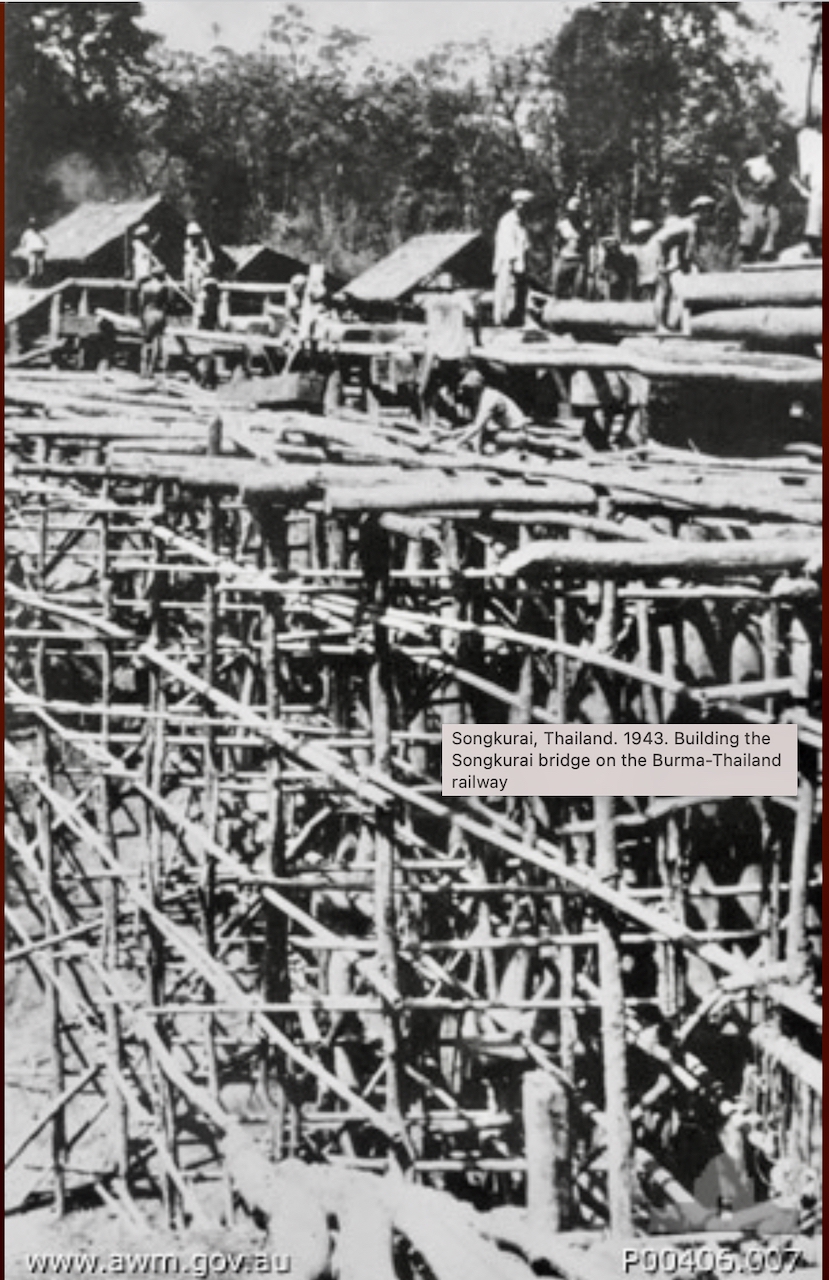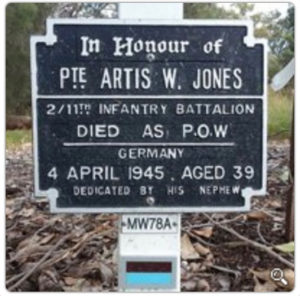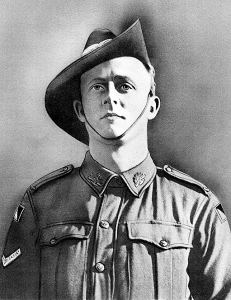‘F’ Force Thailand (revised December 2021)
The story of ‘F’ Force is so tragic it makes one cry & feel exasperated to read about the incompetence and lack of any level of leadership of POWs.
In April 1943 the Japanese ordered Changi POW Command to prepare 7,000 POWs to proceed overland to a new locality where food would be more plentiful and those who were then sick, an opportunity to recuperate in a better climate. They stated it would not be a working party. Bands could be taken and canteens established.
Of course it was all a lie. Another Japanese lie.
The overall command was under British commanding officer Lt-Col S.W. Harris, 18th Division. AIF to provide 3,600 men and the British 3,400. Lt. Col. Dillon M.C. would command the British contingent and Lt.Col Kappe the AIF which was predominantly made up of men from 27th Brigade – 2/26, 2/29 and 2/30th Btns with Artillery and Signals support personnel.
Colonel Harris through ‘F’ Force Interpreter Major Cyril H. Wild (who carried the white flag for General Percival at Surrender of Singapore) had several interviews with Captains Miyasaki and Tanaka, officers in charge of Changi, in regard to fitness and marching. Requests were made for Red Cross representatives to accompany the Force and for funds to be made available from the International Red Cross representatives in Singapore. These requests were denied. No reason was given for refusal.
Lt.Col Kappe indicated the Japanese said the reasons were a military secret. However according to Don Wall author of ‘Heroes of F Force’ and whose work has been used for these paragraphs (with thanks to Don Wall) – Kappe would have known the Australian Red cross representative was in Japanese custody – the Japanese alleged he was part of a conspiracy to use Red Cross money in a plan with an AIF officer and RAAF pilot to purchase an aircraft from a Chinese and escape to India (the Chinese was actually a Japanese spy). The guilty group were already in Outram Road Gaol at that very time.
Colonel Harris and Lt. Col Kappe were convinced the Japanese were truthful and that ‘F’ Force was truly destined for the ‘promised land’. ‘F’ Force officers believed the Japanese, (or perhaps they wanted to) in particular the British. In fact the Japanese wanted them out of Changi and away from Singapore no matter the consequences.
Five other Colonels and the grand British Concert party personnel were included in the draft, together with a grand piano.
We believe the British sent about a thousand unfit men and the AIF not more than 125. The British would suffer dire circumstances.
Some AIF groups received their first cholera inoculation on 13th April and were due to receive the second on the 19th. The inoculations were deferred in order not to change the train allocations which would have meant many British POWs would arrive before the Australians and Lt. Col Kappe was anxious the Australians should get first pick of the ‘promised land’ accommodation. The remaining inoculations were cancelled. The decision was made the cholera vaccine would be sent with their individual train groups and POWs vaccinated at their destination. The failure to inoculate the POWs would result in horrific consequences.
The senior medical officer of ‘F’ Force was Major Stevens who was in charge of about nine medical officers with 220 other ranks.
Another major problem was the number of officers – 125 officers were assigned to command 3,300 men. This was the original idea of Kappe – using ‘F’ Force as a brigade to link up with the British troops in Burma should the opportunity present itself. The selection of ‘F’ Force reflected this combat interpretation rather than the reality of survival in a harsh and unforgiving Thailand POW environment.
Reg Newton U Battalion was adamant not to include an abundance of officers – knowing they would be at the beck and call of the Japanese for having too many ‘drones’ (non workers) around the place; taking only one officer per hundred men.
Of interest is the allocation of clothing allowance from Changi AIF Command – remember Dunlop asked for clothing and boots and left with nothing!
-
25% of all clothing held by Changi Command was issued to ‘F’ Force – 762 pairs of boots, 1344 vests, 138 cardigans167 shirts and 245 shorts.
-
AIF Kit Store issued 1,000 pullovers, 20 hats, 200 socks, 400 stockings, 1,000 housetops, 10 bags comforts, 10 bags of braces, 100 sports shirts, 200 white bags, 150 underpants, 250 singlets, 100 pyjama coats, 50 gaiters, 100 trousers, 100 jackets, 2 bags clothing material, 6 machine needles, 10 reels of cotton, 200 scarves, 150 singlets in lieu of towels, 30 ribber chaplis (footwear).
-
IJA state extra blankets, clothing, boots, mosquito nets being sent to destination in bulk.
-
‘F’ Force was granted around $14,000 at a rate of $4 per man – as per ‘D’ Force with the CO of each battalion being given $500. The remaining money was to be administered by Lt.Col Kappe.
-
While ‘F’ Force was destined to suffer because of deficiencies in structure and planning and its cumbersome equipment – its greatest disadvantage was because of its Japanese administration. ‘F’ Force was to be administered from Singapore whilst the preceding work forces were commanded by the Japanese Railway Administration in Thailand. Administration in Singapore of supply and management was too far away. As well the compartmentalised nature of the Japanese army also exacerbated this disadvantage.

-
Above: Artist Murray Griffen’s POW’s departing Ban Pong on the beginning of their 300 or more Km march. (We wish to acknowledge Anzac Portal)
-
Peter Brune wrote
-
‘F’ Force was to suffer arguably the worst Australian senior leadership on the railway.
‘F’ Force departed Singapore Railway Station without full medical protection to an unknown destination and with no idea what was ahead of them.
The Japanese had said food was running scarce in Singapore – they were being sent where there would be good conditions and abundant food. A large percentage of ‘F’ were already deemed sick, or recovering, many were from an older age group as well as those who were not trained as soldiers but entertainers, etc. and deemed not suitable for working parties.
The first of thirteen trains left Singapore 16 April 1943. Each train transporting approximately 600 men crowded into rice trucks, 28 men to each truck. The horror journey took 5 days to Banpong.
The POWs were informed transport would be provided and they could take with them whatever they wished. The men were allowed to take loads of equipment such as blankets, cooking utensils, gramophones and even a piano!
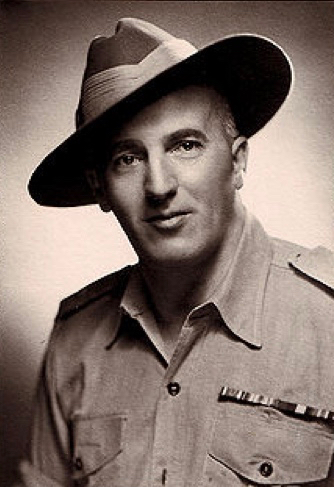
One man who did not believe the Japanese was Dr. Bruce Hunt who had volunteered to go with ‘F’ Force. On returning to Changi he addressed ‘F’ Force men “We are going to a Convalescent Camp somewhere north. The Commanding Officer believes it but I dont”.
He warned them that conditions and life ahead would be very hard – they should prepare themselves. They would encounter diseases they had never heard of – diseases will be rife.
Bruce Hunt feared for the future.
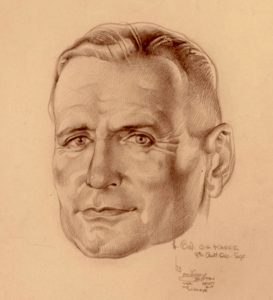
Portrait of Lieutenant Colonel Charles Henry Kappe VX48789, Commanding officer 8 Division Signals and General Staff 2 (Operations) – now to command 3,600 Australians of ‘F’ Force. (from AWM)
Please read further of Kappe appointed CO of Australians of ‘F’ Force
Please read Capt Fred Stahl’s diary of ‘F’ Force
‘F’ Force Camps included:
Konkoita
Taimonto
Shimo Neikhe
Neikhe Bridge Camp – Romusha only
Neikhe River Camp – Temporary
Neikhe Camp
Shimo (Lower) Sonkurai
Sonkurai
Kami (Upper) Sonkurai
Changaraya
Three Pagoda Pass
Below: 2/4th MGB = total 48 men. (19 men died). In charge was Capt George Gwynne WX3450.
Gregory brothers of Kalgoorlie joined ‘F’ Force. WX8674 ‘Jack Gregory died of Cholera at Shimo Sonkurai on 1 June 1943.
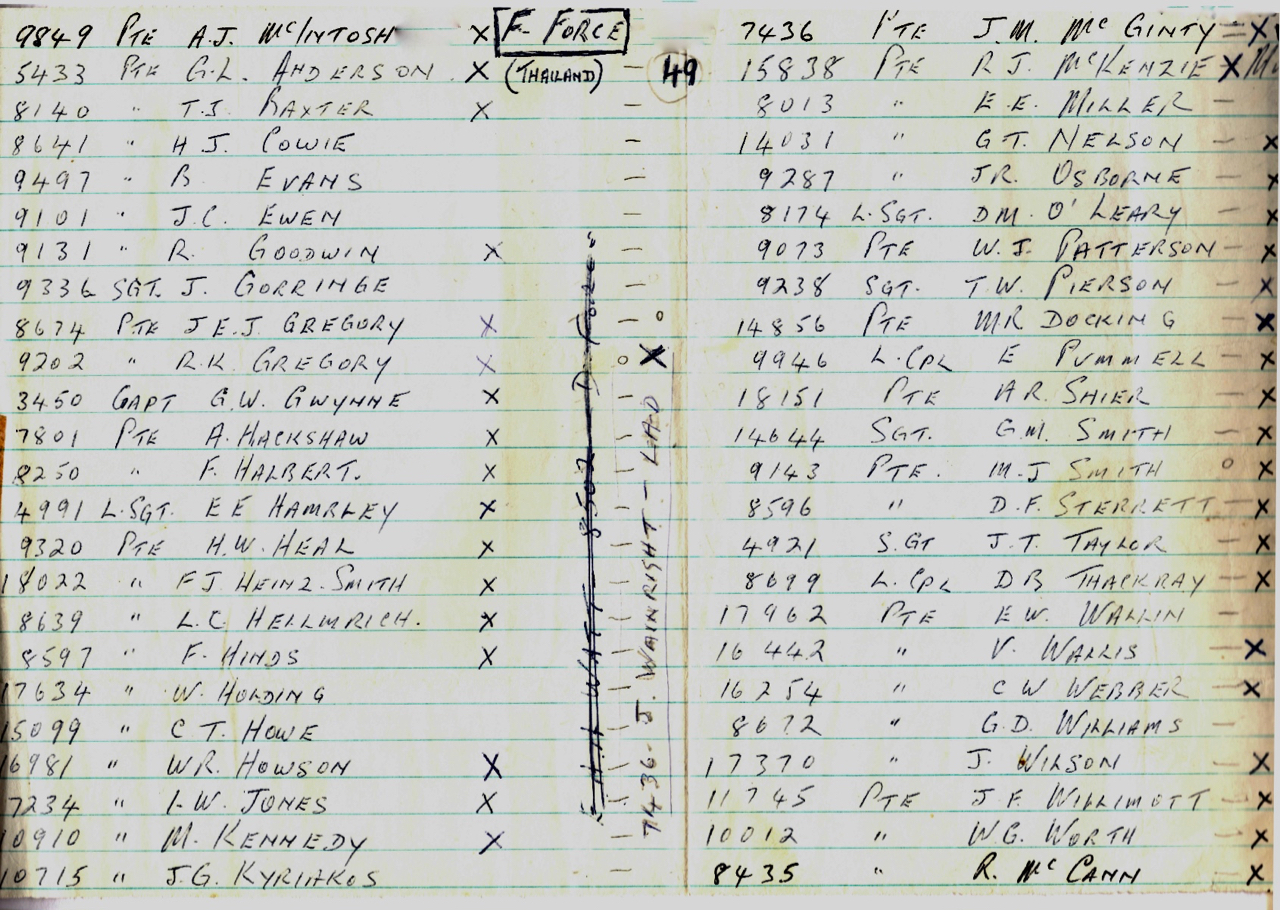
The above list was compiled by Harold Cowie WX8641. Copy kindly provided by his wife Glad Cowie, 2017.
Below: Pte Harold Cowie b. 1914 Perth. Enlisted AIF Oct 1940. Joined ‘B’ Coy, as a Driver. Worked on Burma-Thai Railway with F’ Force Thailand. Recovered Changi Gaol Camp at end of war.
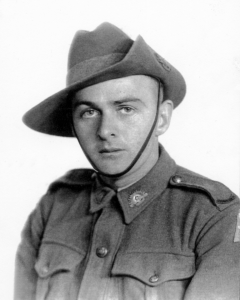
2/4th Men from F Force Who Returned to Australia
ANDERSON, James Lorimer B Coy
BAXTER, Francis John C Coy
COWIE, Harold John B Coy Driver
DOCKING, Melville Roy A Coy
EVANS, Benjamin (aka Benjamin Tiley-Evans) D Coy
EWEN, Jack Clifford A Coy
GORRINGE , John B Coy
GREGORY, Ronald Keith A Coy
GWYNNE, George W. D Coy, (Wardmaster Tanbaya)
HAMBLEY, Ernst Edgar B Coy
HINDS, Francis B Coy
HOLDING, Wally E Coy
HOWE, Clifford Thomas AAOC Armourer
HOWSON, William Robert HQ
KENNEDY, Mervyn St John HQ Signaller
KYROS, Jack George HQ Signaller
MCGINTY, Joseph Michael HQ
MCKENZIE-MURRAY, Robert James A Coy
MILLER, Edwin Ernest B Coy HQ Driver
NELSON, Cecil Thomas HQ
PIERSON, Thomas William Btn HQ
PUMMELL, Ephraim Albert AAOC
SHIER, Arthur Roy A Coy
STERRETT, Douglas Francis A Coy Rangetaker
WAINWRIGHT, John William 88 LAD Fitter
WALLIN, Edward William E Coy
WALLIS, Vincent A Coy
WEBBER, Claude Vincent D Coy HQ
WILLIAMS, George David HQ Driver
WILSON, John D Coy
A total of 49 men from 2/4th were selected in Singapore to work on the Burma Thailand railway with ‘F’ Force.
30 MEN RETURNED and 19 DIED from 2/4th
-
‘A’ Force worked from the Burma end of the railway, southwards.
-
‘D’ Force, Dunlop Force and others worked the southern most end of the railway in Thailand
-
‘F’ Force Thailand was required to work on the middle section of the rail link where the terrain was rugged, uninhabitable, infertile and mountainous.
The Australians were mostly concentrated at Shimo (Lower) Sonkurai and Kami (Upper) Sonkurai. In these remote and primitive camps cholera ravaged the POWs – they had little access to trade with the local Thais for food and medicine. (unlike the POW Camps further south with access to the Rivers and trading with locals). The death rate was devastating.
One of the purposes of Sonkurai camp was to construct a very big bridge across the river.
This is in fact was the ‘real’ Bridge over River Kwai – (not the bridge at Kanchanaburi).
Please read about Kami (Lower) Songkurai Camp
There was a large camp where the men were accommodated and a smaller ‘hospital’ camp further away for the very sick where the doctors and orderlies tried beyond their best to assist and provide care and comfort with little or no medical equipment or medicines including the dreaded cholera.
Below: ‘F’ Force departing Changi
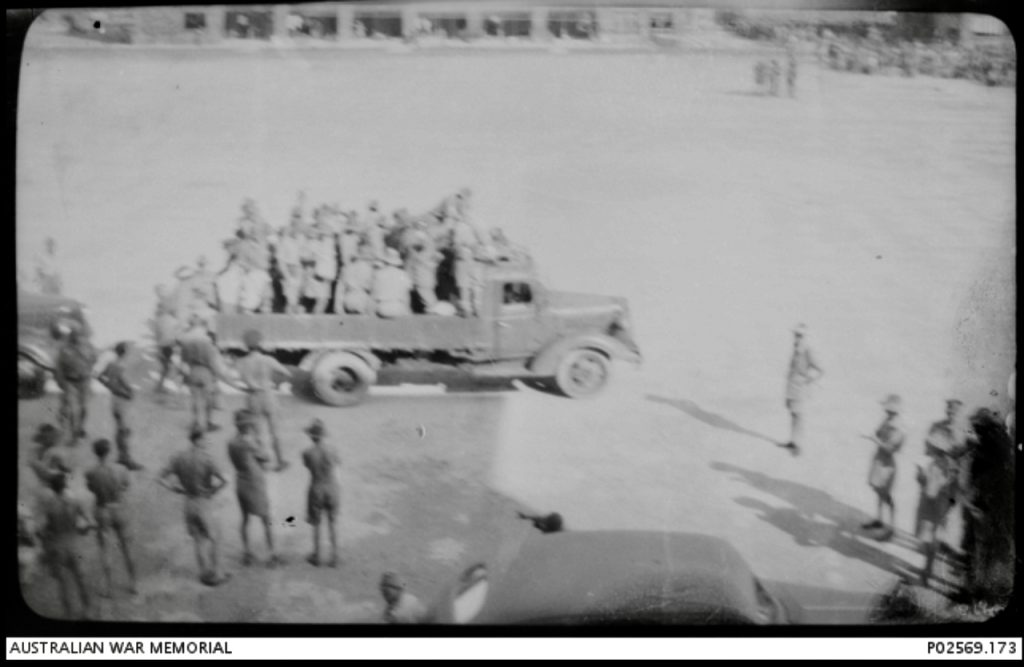
Below: POWs being trucked through Singapore to the Railway Station.
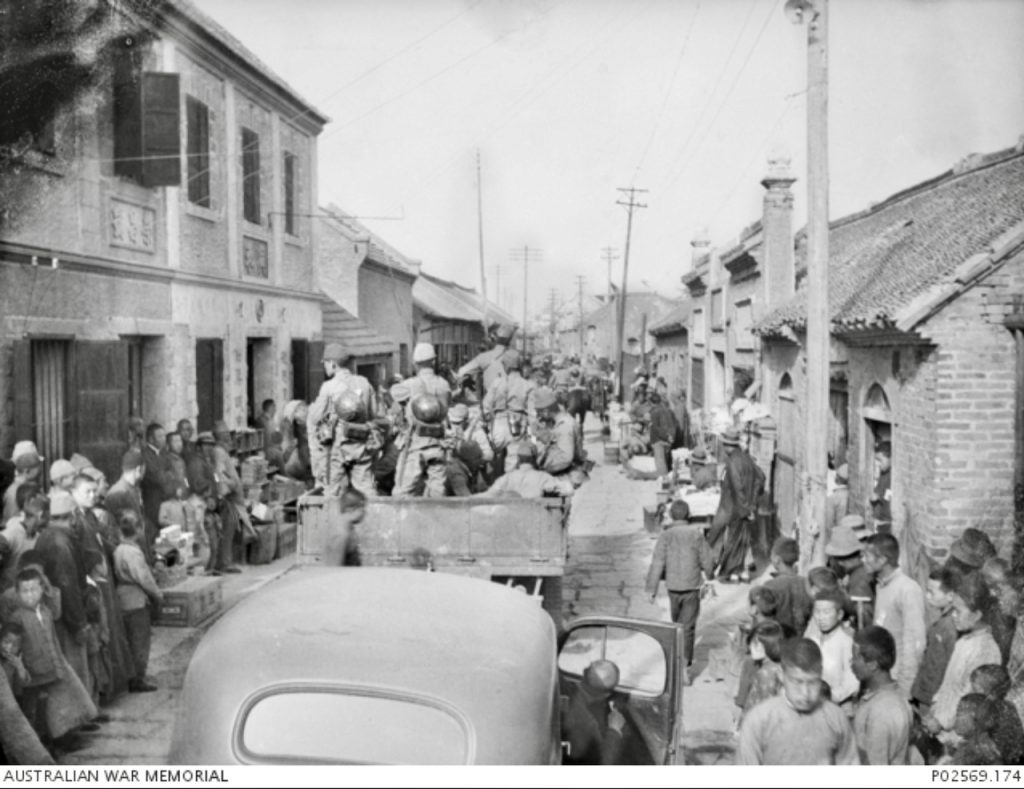
Above: ‘F’ Force enroute to Singapore Train Station & Burma-Thai Railway April 1943.
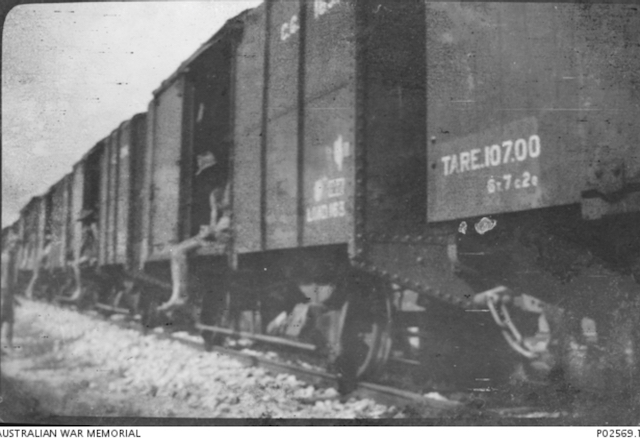
Above & Below: ‘F’ Force on journey to Thailand. 1943.
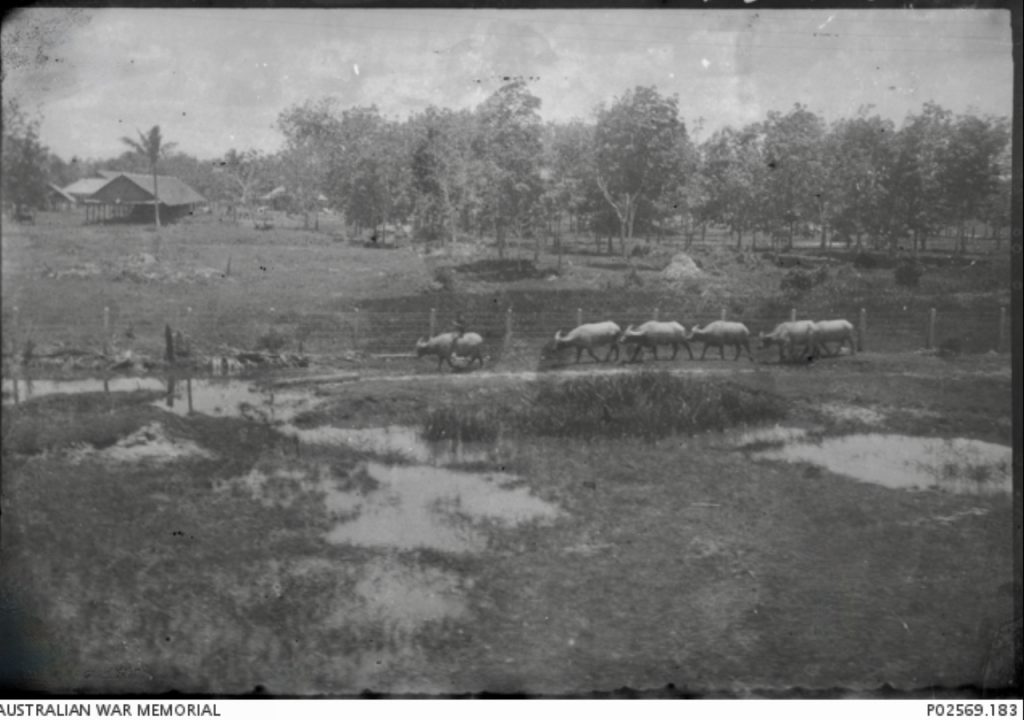
The march north for ‘F’ Force took between 17 -25 days. There were many deaths during this time. Most other Forces working on the Burma-Thai Railway, were transported some distances between camps. But this was not available for ‘F’ Force.
On reaching Banpong the men were marched mostly at night, on very poor and sometimes non-existent tracks to various staging camps as far as 330 kilometres north. Conditions on the march were appalling. At night in the jungle the men were unable to see ahead, sometimes tripping, falling and injuring and fracturing limbs. The condition of their feet was such that many were unable to march. The march took between 17-20 days. The Japanese had made no provision for supplies of food, water and cooking facilities let alone accommodation at staging camps which were often occupied by Australians who tried to help ‘F’ Force men by providing what food they could spare.
It was during the terrible march that the men of ‘F’ Force became familiar with Dr Bruce Hunt who was a driving force, encouraging the men and taking care of them with his medical team.
When the group with Bruce Hunt stayed over at Tarsau, Hunt endeavoured to leave behind the exhausted and sick men. Following a medical examination by the Japanese they agreed 37 men were unable to continue, However the Japanese Corporal of the Guard would only allow 10 men to remain. Hunt and the interpreter Major Wild met with the Japanese to no avail. In fact Wild and Hunt were assaulted by several Japanese with bamboo in front of a whole parade of POWs. The POWs were infuriated and wanted to get into the ‘scrap’ with the Japanese. Hunt restrained the men by shouting it was his fight, and ‘to keep out of it you blokes’. Hunt was left with a fractured arm.
Hunt recorded he was again struck by Japanese guards with bamboo at Camp 6. The diseases and disorders most prevalent on the march were Senility and cardiac weakness. The majority of these men were left at Camp 2. Dysentery then became increasingly common as well as septic abrasions of their feet caused by ill-fitting boots and of course many men were not used to marching.
Some staging posts had been used by coolies and left in appalling conditions. Probably the reason cholera broke out at Konkoita a few days after passing through one of these posts.
Please read the stories of medical orderly Reg Jarman
Arriving up country in early May, ‘F’ Force was ultimately spread across at least six camps progressing toward the Burma border:
of which 3 were Australian:
No. 1 (Lower or Shimo Sonkurai)
No. 3 (Upper or Kami Sonkurai)
No. 4 (Konkoita)
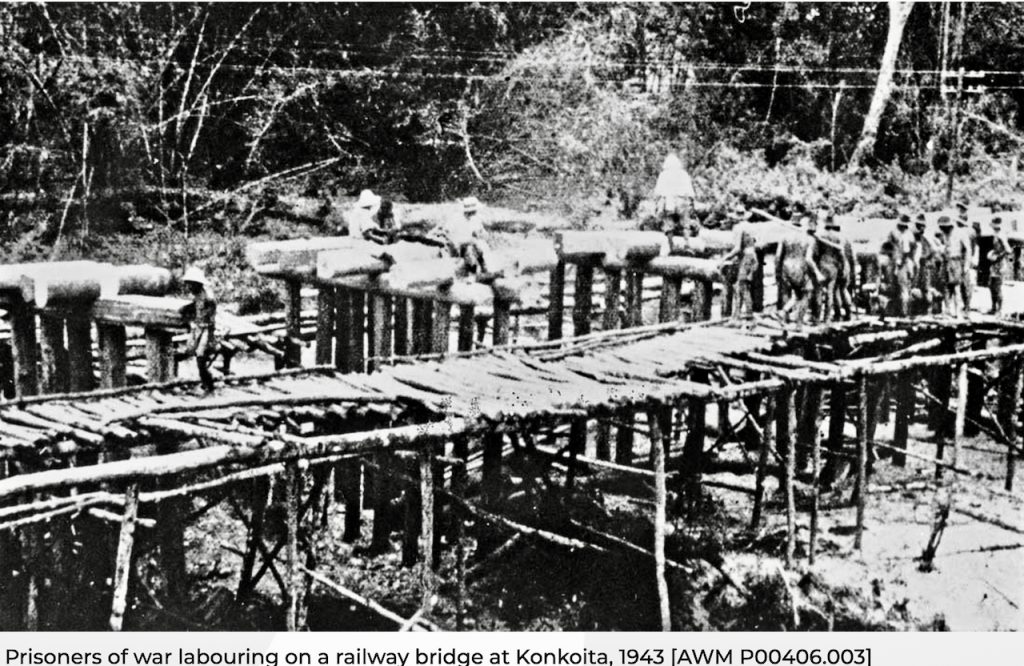
‘F’ Force HQ camp was Neikhe. HQ was located on high ground and below on the river flat, were two regulation huts – Cookhouse and Store to house 1200 men. Above this camp on a drift sand ridge a couple of metres above this was the HQ Camp where Colonel Banno and his staff were located also a hut where POW command was present. The POW Camp was commanded by Lt. Col. Dillon who became the effective commander of ‘F’ Force.
Banno had retired from the army and was recalled to duty when war broke out. Most POW medical officers found Banno to be a gentleman. He often visited the camp and hospital. Col. Harris who was the British Commanding Officer of ‘F” Force was in the Administrative part of Camp (according to ‘F’ Force by Don Wall) – he was never seen near the hospital or working areas. Col. Harris walking with his arms behind his back was seen by Col. Banno who said to him ‘to straighten his shoulders’. (This is why Lt. Col. Dillon became the effective commander of ‘F’ Force).
Another report from COFEPOW states
‘The local Japanese Commander was Lt. Col. BANNO, who proved incapable either of administering the Force or of protecting its personnel from the outrageous demands and treatment of the Japanese engineers, under whom it was put to work. The camps were commanded by junior Japanese Officers or NCOs of the MALAY POW Administration and the guards were Koreans. The former, with one exception, were entirely subservient to the engineers, or themselves actively hostile, while some of the Koreans also treated the Prisoners with senseless cruelty. The Officers and men of the engineers, whose sole responsibility to the prisoners was to make them work, behaved with calculated and extreme brutality from start to finish.’
On night of 14/15 May, 1,000 AIF men from trains No. 3 and 4 under Major Tracey, marched out from Lower Neike to their permanent camp at Lower Sonkurai, a distance of 7.5 miles. In this group was M.O. Capt R.L. Cahill, 13th AGH.
On the morning of 16 May all fit men were sent to work. The following day the second group under Major Johnston marched into Lower Sonkurai. After surveying the camp, Major Johnson pressed for immediate supply of atap for roofing the huts in view of the approaching monsoonal season. He particularly stressed the necessity of keeping sufficient men in camp to construct new latrines, kitchens, water sterilising points, etc. and reinforcing the huts. The floors of two huts had already collapsed under the weight of the men and further huts also showed signs of collapsing.
On the second day at camp, 2 cases of cholera had developed and were promptly isolated. A general hospital was also erected over the creek and north of the camp, known as “Cholera Hill”. The hospital received 40 patients within first 24 hours.
Lt. Fukuda intimated that the 800 men who arrived with Major Johnston were to be medically examined. He linked their arrival with the outbreak of cholera, and despite strong protests from POW Camp doctors, he persisted for several days that only this party was affected. (The same officer was to display the same lack of common sense during the second outbreak of cholera).
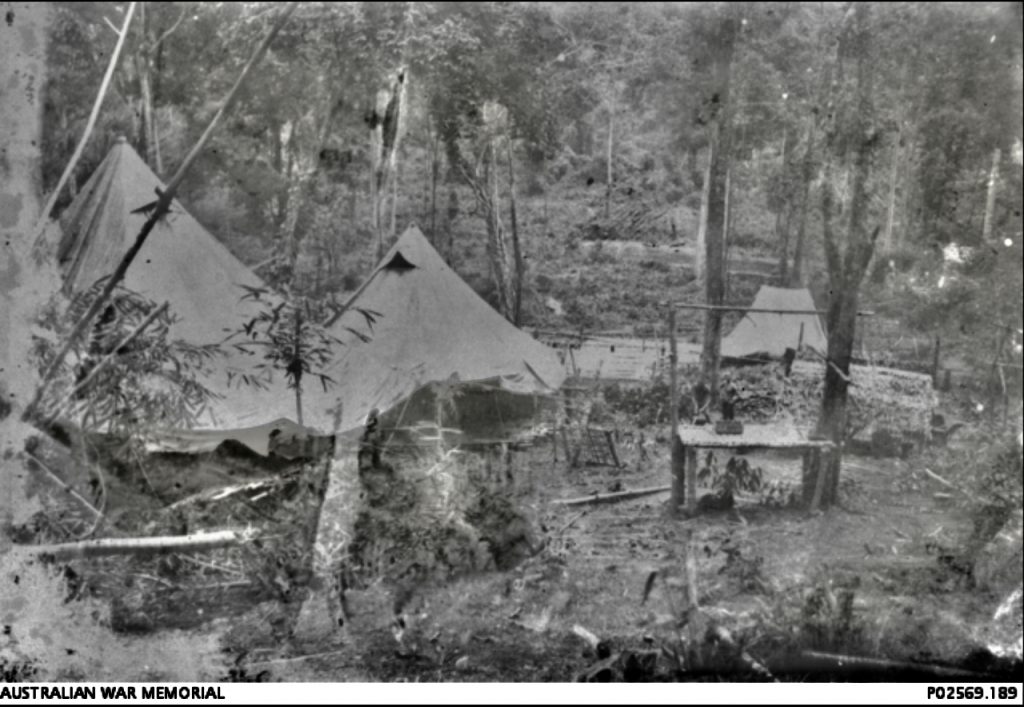
‘Cholera hill, an isolation hospital for members of “F Force” suffering from the disease at Shimo Sonkurai No 1 Camp. To the right of the hospital tents is a make-shift operating table where amputations, treatment for tropical ulcers and autopsies were done.’
By the evening of 16 May there were 16 men suspected of having cholera.
Cahill was the only doctor when cholera broke out and became deluged with sick men and further cholera cases. A message was sent from Lower Neikhe Camp . It was eventually decided Major Bruce Hunt and Capt. John Taylor would proceed to Lower Sonkurai. They brought with them 15 orderlies and vaccine from the limited stocks they collected at Konkoita (brought originally from Changi).
Major Hunt and Captain Cahill inoculated 1400 men by 19 May, however this was extended to 20th May to include 163 men who arrived with Capt. Howells as they had not been inoculated in the lower camps.
There was complete apathy in the camp as POWs worked longer hours, sometimes to 2100 hours in incessant rain with cholera and sickness including malaria, numbers growing. The Japanese were hostile over falling numbers of men able to work. POWs were falling asleep at work.
Food supplies were poor and jobs around the camp, including sealing the latrines, had not been tended to because there were insufficient men to do so.
The POWs were to receive a second cholera injection.
By the end of May there had been 22 cholera deaths with another 55 men diagnosed. Camp discussions decided Bruce Hunt approach the Japanese for immediate changes.
By the end of June only 700 men from what was by now a workforce of 5,000 POWs were at work on a daily basis. Of the 700 men, only about half were sufficiently fit for heavy labouring work. Of the original 7,000 POWs who had left Singapore it is estimated 1,350 failed to complete the march to their appointed camps – having fallen sick, died or been ambushed by Thai bandits.
Col Pond’s Battalion of 700 POWs was commandeered at Konkoita by Lt. Maruyama to work for Japanese Railway Engineers. Please read further about Pond’s Party
By this time the main road from Non Pladuk had been cut by monsoon rains. These rains began in earnest 17 May and lasted until 2 October 1943. The road was impassable and vehicles could not access the areas where the Australians of ‘F’ Force were concentrated.
The Kwae Noi River was used to by barges to bring merchandise as far as Nikhe Village – to supply Thai shopkeepers and for the Japanese to continue supplies destined for (the fighting in) Burma. ‘F’ Force medical supplies were still at Pladuk and supplies could not keep up with the demand. ‘F’ Force supplies were drastically reduced in June.
Their camps located in the centre of a known cholera belt the Australians lost 1,066 men not only from cholera but other tropical diseases during April to November 1943.
1700 sick ‘F’ Force were sent north to Tanbaya Hospital Camp, Burma where a further 750 men died within a short time. Tanbaya had little or no medical supplies.
Further reading of those men who died at Tanbaya Camp Burma.
The linking of the railway line from north and south was completed in mid November 1943 after which the remaining ‘F’ Force moved to Kanchanaburi. From here most of the ‘F Force Australians were transported by train to Singapore in December 1943 with those who were sick returning later, sometimes months later.
The Australians lost 1060 men – 29%, the British had 2037 men die – 61.3%. These figures are unforgivable! There are many reasons:
-
‘F’ Force had the highest rate of cholera deaths, (the men had not received their inoculations prior to leaving Singapore).
-
1) Remember the Australian men of ‘F’ Force were not fighting men as such, many were administrative and often older men who were musicians as well as many soldiers had been ill and hospitalised prior to departing Singapore. Generally unfit and unsuitable for what was ahead of them.
-
2) Often their camps had no food, water or medical supplies – the rainy season had prevented supplies reaching camps – but there was plenty of work.
3) The inhumane treatment perpetuated by their Japanese captors, Japanese engineers and Korean guards.
(Recommended reading “A River Kwai Story, The Sonkrai Tribunal” by Robin Rowland Printed by Allen & Unwin ISBN 9781741144222)
and finally, and importantly
4) Finally and most importantly The poor leadership of POWs – too often doctors and medical staff were the ones to step up, make decisions and were concerned for the welfare of the men. We now know some officers were well able to lead their men in battle, but they completely failed their duty in captivity – focused on ensuring their own mortality and returning home.
POW life was new to all ranks.
This new life required different leadership, common sense and most importantly, a very high regard for every man’s life. Leaders who failed to adapt lost the respect of their men. This resulted in deaths, despair and apathy. Each man looking after himself.
Please read the Diary of Capt Fred Stahl 8th Div signals.
Staff Captain (Administration) to Lt. Col Kappe, 8th Division Signals – appointed CO Australian contingent of ‘F’ Force. Kappe told Capt Stahl when they arrived at their camp ‘to ensure he received double rations.’
Kappe would be rarely seen by his men, too frightened to deal with the Japanese. He was recognised as being inefficient and incompetent.
We wish to acknowledge the following is from Tom Gilling ‘The Lost Battalions’
The British Commander of F Force, Lt Col Stanley Harris seeing the British POWs dying twice the rate of Australians believed the Australians benefited from being ‘all members of one volunteer force with a common emblem and outlook’ and that their average physical condition was ‘incomparably higher than that of the mixed force of regular soldiers, territorials, militiamen, conscripts and local volunteers who formed the British half of F Force. Harris believed the Australians had more experience of looking after themselves under ‘jungle or bush’ conditions.
Ray Parkin wrote “The English are careless. They drink from wayside pools. Their officers make no provision for getting the men boiled water. The english officers are waited on by batmen, and spend their time in self-seeking and self protection.”
Please read Kami Sonkurai (Upper Sonkurai) No. 2 Camp 299.20km, Thailand
Kami Sonkurai (Upper Sonkurai) No. 2 Camp 299.20 km Camp – Thailand
Please read COFEPOW’s story of F Force
Please read Wally Holdings memoirs Part 1
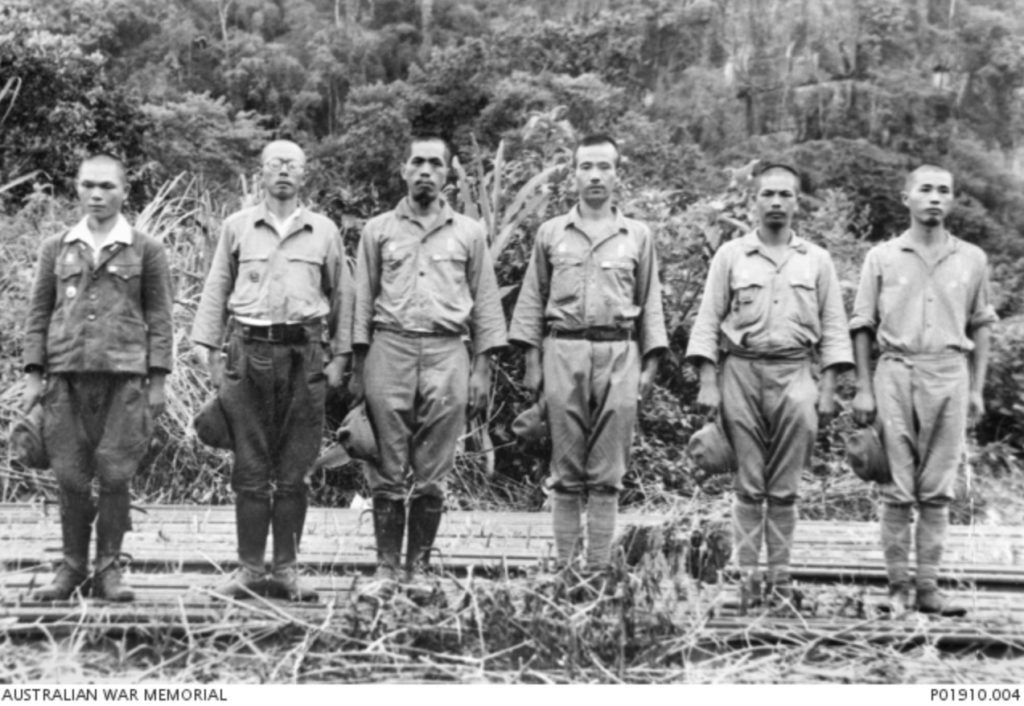
Nieke, Burma. c. October 1945. Group portrait of Japanese war crimes suspects, formerly guards at prisoner of war (POW) camps, interrogated by the War Graves Commission survey party. The main Nieke station was approx. 133 kilometres south of Thanbyuzayat or 282 kilometres north of Non Pladuk. Photographed by the War Graves Commission survey party whose task was to locate POW cemeteries and grave sites along the Burma-Thailand railway. They also took the opportunity to recover equipment and documents which had been secretly buried, under instructions from senior POW officers in the graves of deceased POWs.
Please read about the War Trials Sonkurai
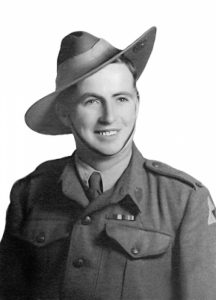
The following is from the written memories of Wally Holding who is pictured above.
‘When we came back from Singapore in trucks to Selarang area our people used trucks stripped down, they just had the seat, steering wheel and foot brake. They were pulled by ropes – 8 or 10 blokes and a rope out in front and a crossbar, 2 blokes to each crossbar. They shifted everything around the camp throughout POW days this way.
I was loaded on top of the gear when we were shifted. I must have been a bit of a sight I had not had a wash for many days. At Selarang I opened my eyes and I saw a 2/4th Officer, colour patches, pips, polished shoes, long socks – just as if he might be on the parade ground in Northam.
I made a noise to attract his attention and he came over, I wanted to try and tell him who was not coming back. He headed across towards the truck, took one quick look at me and went off for his life out of the way.
I supposed he reckoned whatever I had would be contagious and he did not want to have anything to do with it. He was Captain Smith-Ryan, 2/4th Machine Gun Battalion, one of our own Officers (Smith-Ryan remained in Singapore throughout the war). I never caught up with him again, not that I wanted to. He had died since we came home.
On the parade ground there was another bloke in the same condition as I was, they carried us into a new hut which had just been built, there was no flooring – they usually put bamboo flooring into the huts but this one had bare ground.
While they were counting the troops off -Jack Gorringe brought the guard over to show there were two extra bodies that they had not counted. I was laying there, I knew what was going on but I could not move. The guard walked over and gave me a kick in the ribs to find out if I was still alive. It sticks in my mind and it always will, I felt I would like to get up and belt the bastard but I could not move. Once they finished the check parade in a matter of minutes I was on a stretcher and the boys from Roberts Barracks, which was the hospital, had me on the way to a hospital bed.
Checking the last lot of my medical records from DVA I found out I was admitted to Roberts Barracks Hospital on 23 December 1943, that was the day we got back to Singapore.’
Colonel Pond was part ‘F’ Force Thailand.
You can also read F Force history prepared by Lt Col Kappe and Captain (Later Sir) Adrian Curlewis (1940’s)
(The Victorian R.S.L. granted permission to 8th Division Signals to print story of “F” Force as appeared in “Mufti” in 1951 – 3.)
There is a more detailed description of ‘F’ Force:
POWs of the Japanese 1942- 1945 Reported by Col Peter Winstanley
The survivors of F’ Force returned to Changi in appalling condition, all were skeletal and many ill, some dying and all dressed in rags. A large number of very sick POWs were left behind in hospital camps in Burma and Thailand.
Lt-Col Kappe
In contrast Lieutenant Colonel Gus Kappe returned to Changi well conditioned, in fact he was fat. Officers received much more pay than enlisted men, and did not work. Kappe initially showed interest in his men but this quickly waned. He preferred not to have his face slapped by the Japanese and rarely exited his tent. Some officers pooled their extra pay and shared with their men. Kappe took good care of himself with extra food from his officer’s allowance. Kappe had even turned over some of his own men to the Japanese for punishment.
The men knew it. They detested him. But they rarely spoke of it. (This information from Interviews by Tim Bowden for ABC Radio and recorded in his book ‘Stubborn Buggers’)
Peter Brune in his book Descent into Hell is further revealing of Kappe’s poor leadership. He described Kappe’s record as one of ‘incompetence, sheer neglect and the total use of abuse of the privileges of command’.
Fellow officer Captain Fred Stahl wrote of Kappe ‘One of his first acts was to issue an instruction that he (Kappe) was to receive double rations.’ Kappe also thought he was best qualified to be the person to go back to Singapore and tell the story of the bastardry!
Private John Boehm told Brune ‘Kappe ‘didnt have any patched clothes…………he looked physically well ……the doctors and kitchen staffs hated his guts because he ….demanded what he wanted ………his nickname was Kappe-yama.’
Col Kappe is also discussed in ‘Leadership of POWs in WW2’ by Katie Lisa Meale, University of Wollongong Thesis Collection.
For further reading about Kappe
This is an excellent medical report/description of ‘F’ Force and the malaria ill British and Australian POWs, please read:
Those who lost their lives with ‘F’ Force include:
WX9131 GOODWIN, Rueben
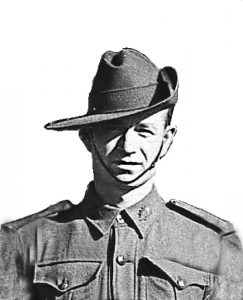
Goodwin was b. 1916 Essex England came to Fairbridge Farm School, Pinjarra in 1928. Goodwin had worked as a farm labourer for several years at Konongorring. He enlisted AIF 30 Oct 1940 later joining ‘B’ Coy No. 9 Platoon under CO Lt Lee others in this Platoon include Harold Cowie. Goodwin was evacuated sick to Tanbaya Hospital Camp in Burma where died on 6 Nov 1943 of beri beri and dysentery aged 27 years.
You can read about Fairbridge Farm School, Pinjarra.
WX8674 GREGORY, John Edgar James (known as Jack)
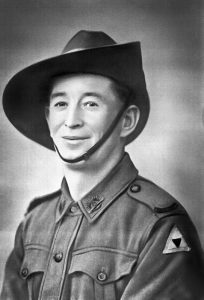
Jack died 1 June, 1943 Shimo Sonkurai of cholera aged 39 years. A former Goldfields boy and miner, Jack enlisted same time as his brother Ronald who later joined ‘A’ Coy. Jack joined ‘B’ Coy No. 7 Platoon under CO Lt. Dean.
The brothers left Singapore with ‘F’ Force.
Ronald was also working at Shimo Sonkurai at the same time. It would have been a huge tragedy to lose his brother to cholera.
Below: brothers Jack and Ron Gregory
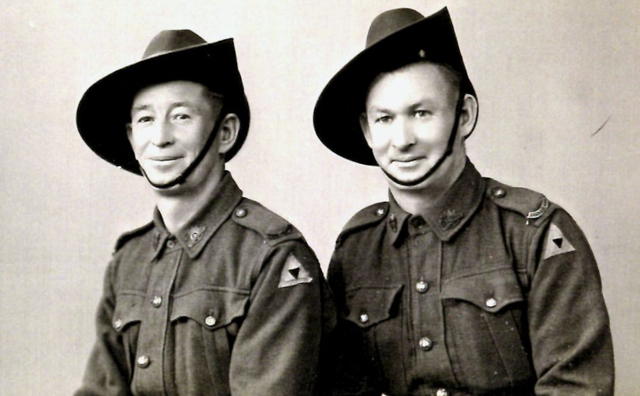
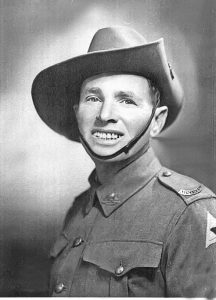
WX7801 HACKSHAW, Albert b. 1900 Surrey England sailed to Australia 1912 as a child with his parents.
He enlisted AIF Aug 1940 later joining ‘B’ Coy 9 Platoon.
Hackshaw was evacuated to Tanbaya Hospital Camp with topical ulcers.
He died 2 Nov 1943 aged 43 years. His funeral was conducted by Chaplain Duckworth (British Army) on 15 Nov 1943. However the burial was conducted on 2 Nov 1943 at 0130 hours.
WX8250 HALBERT, Frank
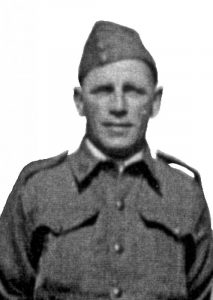
Menzies born Frank died Cholera Shimo Sonkurai 4 June 1943 aged 35 years.
A former prospector, his family had mined in the Menzies area for decades, his grandparents recognised Pioneers of Menzies. He enlisted 16 Aug 1940, later joining 2/4th MGB’s ‘C’ Coy 10 Platoon under CO’s Lt Wilson and Lt Ambrose.
Also in the same Platoon was WX7256 Thomas (Keith) Sawyer, known as ‘Tom Sawyer’ to 2/4th who was also born in Menzies. Sawyer and Halbert would have grown up and possibly attended school together. Both families were extensively involved in gold mining. Sawyer worked on the Burma end of the Burma-Thai Railway with ‘A’ Force Burma, Green Force No. 3 Battalion. Sawyer survived to return home to WA.
WX9320 HEAL Herbert Heal b. 1910 Perth.
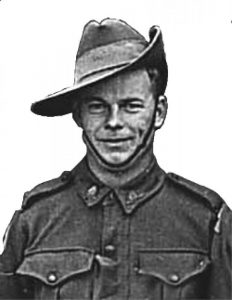
Bert died of beri beri and dysentery at Tanbaya Hospital Camp 22 Dec 1943 aged 33 years. Prior to enlisting Bert had been working at Toodyay as a yardman and knew many of the enlistments from there – sharing a farewell party at the Newcastle Hotel.
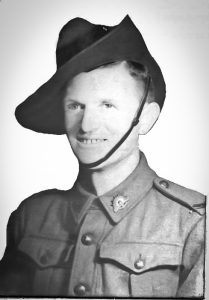
WX18022 HEINZ-SMITH, Frederick Joseph
Enlisted AIF 11 Dec 1941, became reinforcement with ‘E’ Coy.
b. 1902 Paddington, NSW. Fred died of malaria, dysentery and tropical ulcers 23 Oct 43 aged 40 years at Kami Sonkurai.
WX8638 HELLMRICH, Leslie (Clive) b. 1910 Bunbury.
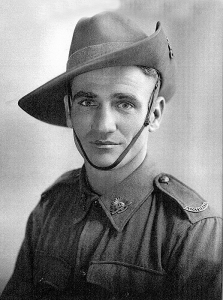
Evacuated from railway to Kanchanaburi Hospital Camp where he died 22 Dec 1943 of malaria, beri beri and dysentery aged 33 years.
Clive’ Hellmrich was a talented sportsman, in particular Australian Rules Football. He was a left footer and prior to enlisting in October 1940 he played 10 games for Swan Districts Football Club in 1934 and 1935; scoring total of 11 goals and 2 points. Clive shared roving duties with Ron Badock in the 2/4th footy team. Read further about 2/4th Football team.
He enlisted AIF Oct 1940 later joined 2/4th MGB’s ‘A’ Coy No. 5 Platoon as a Driver under Commanding Officer Lt. Walton and Lt Learmonth.
As a POW at Singapore Clive met up with his brother Noel.
Clive was Taken on Strength 2/6th Field Park Company on 5.1.1943 to join his older brother Noel. Noel survived being a POW and was liberated.
Clive’s death left his young wife widowed and his young son without a father.
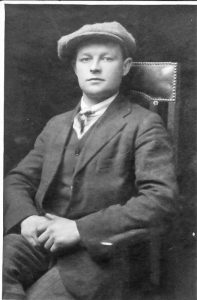
WX7234 JONES, Ivor William
b. 1900 Abergavenny, Monmouthshire, Wales. Enlisted AIF Aug 1940 and later joined ‘D’ Coy 13 Platoon.
Most of the men who were designated to leave with ‘F’ Force had either been in hospital, or were in recovery or generally not in great health.
Ivor’s record indicate he had been admitted to hospital in Singapore on several occasions – with dengue fever 28 Feb 1942, again 22 Aug 1942 and lastly with beri-beri 28 July 1942 and discharged to unit on 10 Aug 1942.
Jones died of beri beri 14 Nov 43 at Kami Sonkurai, aged 43 years.
Ivor arrived 26 August 1926 at Fremantle on ‘Orama’ he was 25 years old, recorded as farm labourer as was his younger brother Artis Walter 21 years who accompanied him. Artis Jones also enlisted – he died as POW in Germany.
WX8435 MCCANN, Robert b. 1918 Moora.
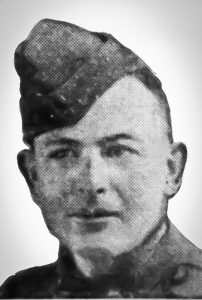
McCann enlisted AIF Oct 1940, previously employed as a stationhand. He later trained with 88th Light Aid Detachment, attached to 2/4th MGB. He left Singapore with ‘F’ Force and died at Kami Sonkurai 23 Nov 1943 aged 35 years of beri beri.
Bob’ father was one of the first settlers around Moore River – in fact a pioneer. The family continued farming with an older brother taking over the family land.
WX9849 McINTOSH, Archibald James Livie
 Born Scotland 1920 ‘Archie’ migrated to WA with his family, resided at Bassendean as did Wally Holding’s family.
Born Scotland 1920 ‘Archie’ migrated to WA with his family, resided at Bassendean as did Wally Holding’s family.
He enlisted AIF 6 Dec 1940 later joining 2/4th MGB’s HQ Coy No. 1 Platoon as a signaller under CO Lt. Curnow.
Archie died of beri beri and dysentery at Tanbaya Hospital Camp, Burma to where he had been evacuated from Shimo Sonkurai. He was 23 years old.
Scottish born McIntosh was a Bassendean Boy with Wally Holding.
WX8174 O’LEARY Daniel Martin

b. Kalgoorlie 1910. Dan enlisted Aug 1940 and later joined ‘A’ Coy becoming a Lance Sergeant. He died of malaria and dysentery at Kami Sonkurai Camp 14 Nov 1943 aged 33 years.
His family resided Narrogin – Dan had followed in his father’s footsteps and began working for WAGR as a 16 year old which continued until he enlisted. He was working at Cue on enlistment.
WX9073 PATERSON, William James (Billy) promoted to Corporal 11 Feb 1942.
Wounded in action North Lim Chu Kang Road at ‘D’ Company No. 13 Platoon position at 1130 hours on 8.2.1942. There was a direct hit which left Joe Pearce buried to his waist, No. 3 gunner Bobby Pratt (WX8705) killed and Paterson severely injured. Admitted to 2/13th Australian General Hospital with shrapnel wounds to his left & right forearms & face he also suffered bone damage to his right elbow. Admitted to 2/9th Field Ambulance & transferred to 2/10th Australian General Hospital on 6.3.1942. Transferred to No. 2 Convalescent Depot ex‐Australian General Hospital on 12.8.1942. Discharged to unit on 27.9.1942.
William who was a former axe champion was hos-pitalised for 8 months. He never attained full use of his right arm. Billy volunteered for ‘F’ Force – he could have remained in Singapore because of his injuries.
He died Shimo Sonkurai 25 Jul 1943 of cerebral malaria and colitis aged 27 years. He collapsed suddenly and was reported to have died peacefully. His body was cremated at Shimo Sonkurai and the casket returned to Sonkurai for burial.
Billy’s death left his young wife widowed with two children to care for.
WX14644 SMITH, Clifford Vaughan b. Perth 1905.
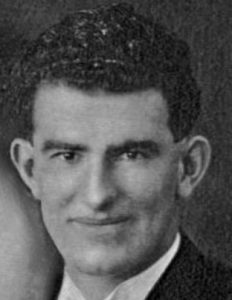
Known as Vaughan, he enlisted AIF 25 Jun 1941. As a reinforcement joined 2/4th Battalion HQ.
Smith left Singapore with ‘F’ Force to work on Burma-Thai Railway. He tragically died Kami Sonkurai Camp on 22 Oct 43 of cardiac beri beri aged 38 years.
He had married about 1928 and had 3 surviving children. Smith had farmed at Mollerin near Koorda for more than a decade before moving to the city. He played football in the Koorda region and would have been well-known.
WX9143 SMITH, Montague Joseph ‘Monty’ b. Queens Park, WA.
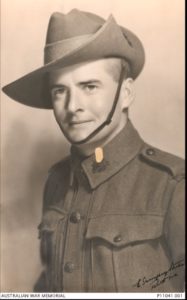
Enlisted AIF Oct 1940. Joined ‘C’ Coy 12 Ptn. Monty was selected to work on Burma-Thai Railway with the ill-fated ‘F’ Force. Evacuated ill to Tanbaya Hospital Camp, Burma and died 13 Nov 1943 of dysentery and tropical ulcers aged 27 years.
‘Monty’ attended Victoria Park Primary School before his family moved to Koorda. In 1926 they took up a farm in a new settlement near Lake Brown in the Muckinbudin district. It was here ‘Monty’ completed his education by correspondence.
He was from a large family and his mother Lilian was left on her own to run the farm. ‘Monty’ and siblings had little time for outside interests and worked hard. He did play football and cricket however not regularly as a district team member.
‘Monty’s’ mother who was known as ‘Mrs. L.M.’ was highly respected. She was the only woman from the area to be called to a 1933 Royal Commission into the Agricultural Bank.
‘Monty’ Smith was one of 4 men from Muckinbudin to join 2/4th. The other three were born in England, had migrated to Australia and all played soccer in the same competition. Joe Sevier (died 1945 Ranau-Sandakan track), Dudley Squire (KIA 12th February 1942) and Reg ‘Buck’ Rogers. Rogers was the only one to survive.
WX4921 TAYLOR, James Templeton
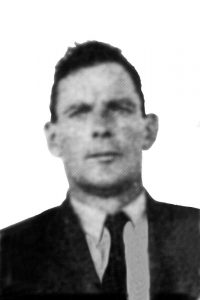
b. 1905 Dunkeld, Scotland. Taylor arrived 8 February 1927 from London on ‘Otranto’ aged 23 years. His occupation was recorded as ‘shepherd’.
He enlisted AIF July 1940. He later joined AAOC training as an Armourer, with 2/4th MGB.
As a POW Singapore he was selected top work on the Burma-Thai Railway with ‘F’ Force Thailand.
Taylor died of beri beri and pneumonia at Kami Sonkurai 11 July 1943, he was 37 years old.
WX8699 THACKRAH, Cyril Bernard ‘Barney Corporal (promoted 14/2/42). b. Reading, Berkshire, England 1903.
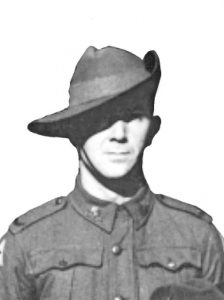
Barney Thackrah was last recorded residing Norseman where he was working as a tool sharpener before enlisting AIF 23 Oct 1940. He later joined 2/4th MGB’s HQ Coy, No. 2 Platoon Anti-Aircraft and promoted to Corporal 14 Feb 1942. He was one of four Corporals under Commanding Officer Lt. Royce who KIA.
Barney sailed from Southampton, England 3 July 1926 aged 23 years for WA on board the ‘Majestic’ he was recorded as being clerk.
In 1931 Electoral Roll Barney and brother Dudley are both recorded working as labourers at Woodanilling not far from Katanning.
In 1936 and 1937 Electoral Rolls Barney was recorded working as truck driver at Laverton.
Barney was evacuated to Tanbaya Hospital Camp where he died on 19 Sep 1943 of dysentery and malaria aged 40 years.
WX11745 WILLIMOT, James Frederick (Jim)
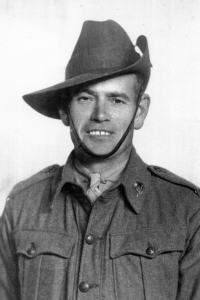
Jim enlisted the same day 21 April 1941 as his brother George firstly as reinforcements then joining 88th Light Aid Detachment where George entered training to be Driver’s Mechanic and Jim a fitter.
Jim died at Kanchanaburi with dysentery aged 39 years. ‘F’ Force was then returning to Singapore via Kanachaburi. George had died about 6 months earlier at Thanbyuzayat, Burma of dysentery, he was 32 years old.

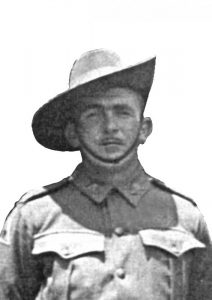
WX10012 WORTH, Walter George enlisted 13 Dec 1940. Joined HQ Coy No. 1 Platoon as signaller.
Wally was one of eight children to the Worth family in Guildford. He had married during 1941 to local girl Millie Dedman.
He was a member of both Col. Kappe’s and Pond’s Parties. He contracted cholera and died 28 August 1943 at Kami Sonkurai. Wally was 31 years old.
‘F’ Force Interpreter to Colonel Harris was Major Cyril H. Wild (officer who carried the white flag for General Percival at Surrender of Singapore)
Please read ‘F’ Force by Cofepow
It has been written that when Kappe returned to Singapore, his physical description was ‘he was fat’ – probably not fat by today’s standards, but he was fat compared to his men in F Force.
The former POWs played down the roles and what they had experienced.
The following excerpts are from a Broadcast from Singapore Radio about 9 September 1945 made by Major Bruce Hunt, A.A.M.C. of Perth. A complete copy of his Radio Broadcast has been included as ‘INTRODUCTION’ of Don Wall’s book “Heroes of ‘F’ Force”.
Dr. Bruce Atlee Hunt was a big and impressive man of incredible physical and mental endurance. He was highly astute, aggressive and had a deep understanding a human nature.
“3,600 British POWs and 3,400 Australian POWs of ‘F’ Force suffered very greatly from hardships, starvation, maltreatment and disease. Malaria was universal as was dysentery, both bacillary and amoebic. Epidemic Cholera took a heavy toll and tropical ulcers of frightful severity were common. Because of the greatly deficient diet supplied to POWs – beri beri was rampant and resulted in 100s and 100s of deaths. Typhus, diphtheria, smallpox and pneumonia added o the heavy death toll.
When the survivors returned to Singapore April 1944 more than 1,000 Australian and 2,000 British had died as a result of the most incredible incompetence of Japanese organisation, callous brutality and the indifference of Japanese guards and engineers. Many of the survivors were gravely ill and subsequently died.
But to the great honour of the POWs – their moral was shaken – at times badly shaken – but it never broke. The medical services worked very hard with the most inadequate material – they could not do less than their utmost for the thousands of their patients who met disease, starvation and death with a fortitude and patient endurance which was beyond all praise.
The ingenuity and resourcefulness of our Medical personnel, British and Australian were very thoroughly tested. One Australian medical officer contrived by means of a small bamboo tube, a funnel made from an old tine can and a piece of rubber tubing made from his stethoscope to give nearly 100 infusions of salt and water into the veins of cholera patients and by so doing saved many valuable lives. Nursing utensils of all sorts were contrived from the most unpromising materials.
Some of the things I saw with ‘F’ Force made me very proud to be an Australian. At one big Australian camp we only had a few cases of cholera. Suddenly one day 35 men went down with cholera in 24 hours. To supply adequate nursing to these men was far beyond the capacity of the small medical staff. When the labour parties returned to camp after dark that evening, soaked to the skin and tired out after 12 hours of exhausting work in mud and incessant monsoonal rain, I explained the situation to them. I told them of all the risks involved – cholera carries a 50% mortality rate – and then asked for volunteers to help – then and there – straight away with the nursing of these highly infectious patients. I gave up taking names when I had 75 on the list. There were several dozen more waiting to offer their services – that’s the sort of thing that made the medical personnel feel that nothing they could do for such men was too high.
In a reasonably varied experience of two world wars, I have on many occasions seen men tried up to and beyond the limits of reasonable human endurance. I would say ‘F’ Force was all of these occasions the most searching test of fundamental character and guts that I have ever known. That so many men, Australian and British, came through the test with their head high and their records unblemished was something of which we of the British race may be not unreasonably proud.”
Australian WW2 authors Don Wall and Tim Bowden stand out as men not afraid to record the truth. Too often writers glossed over events, in particular poor leadership during internment. Officers too ready to ensure they had the best chance to return to their families and detached themselves from the very men they were supposed to lead. The former POWs themselves rarely criticised their officers or other POWs. In fact former POWs writing their personal stories very rarely mentioned their officers and in their place, would have written about their medical personnel.
How and why did officers who shamefully neglected and/or shunned their men receive decorations and promotions after the war???? As Kappe did.
The following poem was written by Colonel Wild when in a POW Camp at Sonkurai, Northern Thailand. An epidemic of cholera had broken out and hundreds of POWs died, a large number being British and Australian, but an even larger number were local coolies who, it is said, were the first to contract the disease.
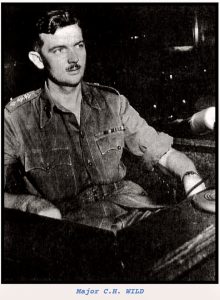
At Sonkurai
At Sonkurai where hope lay drowned
Beneath the bridge the earth is browned
With mould and monsoon vapours veil
The jungle and the creepers trail
Like snakes inert their coils unwound
And there our rear-guard kept their ground
Eight comrades laid beneath each mound
A thousand dead without avail
At Sonkurai
Freed from the captive’s weary round
Homeless, a lasting home they found
Let not our faith their courage fail
‘Til with the dawn the stars turn pale
And, silent long, our bugles sound
At Sonkurai
On 25th September 1946 a Dakota KN 414 crashed two minutes after take-off. On board was Colonel Wild.
Several days before his death, Colonel Wild had made it known to the American Authorities, via Generals MacArthur and Willoughby that he had acquired enough evidence to be able to convict Emperor Hirohito of War Crimes (including bacteriological warfare experiments).
Colonel Wild had been ordered to cancel any further work in this direction and to hand over all the documentation he had so far accumulated. The air crash, in which he was killed, happened at Kai Tak, Hong Kong as he returned from Tokyo after giving evidence at the War Trials on the atrocities committed against the POWs.
All of the above about Major Wild we acknowledge is from COFEPOW – https://www.cofepow.org.uk/armed-forces-stories-list/a-report-of-f-force-in-thailand
Please read Capt Fred Stahl’s diary of ‘F’ Force. Stahl was Staff Captain to Lt. Col. Kappe

Above: Train journey to Kanchanaburi 1943.
F Force Thailand
25 Sept 1946 – 23 Oct 1946 War Trials Singapore
Charges relate to committing war crimes between 1 April 1943 to 31 Dec 1943
Finding and Sentences
1. Lt Col BANNO (guilty) sentenced 3 years imprisonment
2. Capt TANIO (guilty) sentenced 5 years imprisonment
3. Capt MARUYAMA (guilty) sentenced to Death by Hanging
4. Capt FUKUDA. (guilty) sentenced to Death by Hanging
5. Civ. TOYOYAMA (guilty) sentenced Death by Hanging
6. Lt.ABE (guilty) sentenced Death by Hanging
7. Civ ISHIMOTO (guilty sentenced 18 months imprisonment
with exception of the words ‘resulting …………PW’)

